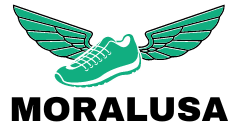How to Tell If Boots are Too Big & What to do
You probably already know the effects of wearing small-sized boots – calluses and blisters are common conditions associated with this. What you may not know is that wearing boots that are too big can also lead to arch pain, blisters, and other painful feet conditions. Remember, your feet are the foundation of your whole body. Therefore, you need work boots that are neither too big nor too small. If you are wondering how to tell if boots are too big, then the following tips will help you find that out.
See also: How to Measure Your Feet for Shoes
How to Tell if Your Boots are Too Big (Tips & Guide)
[acf field=”list”]-
Wear and Test the Boots
You cannot tell if the boots you are considering buying are the appropriate fit by merely looking at them. Therefore, you need to wear and test them. If you are purchasing the shoes over the internet, be sure to test the boots soon after you take delivery of them. Remember not to damage the boots or remove the labels while testing. This way, you can easily return the boots if they are not a good fit.
Brand new boots typically feel a little tight or snug. For this reason, you need to pay good attention to the sides of your feet. While new boots feel somewhat tight, they become more comfortable once they have been broken in. However, if your new work boots feel too loose as you wear them, they are most likely too large.
-
Your Feet Slide Within the Boots
Walk around the space while wearing the work boots. Take note of how your feet shift within the shoes. If the boots feel somewhat loose around the edges, then they may be too wide. If your feet slide forwards and backward as you walk, or if you need to twist your toes simply to prevent slipping, then the boots are possibly too big.
If there is only a minor heel slippage (not more than half an inch) as you walk about in the boots, then you do not need to bother too much. However, substantial heel slippage can result in blisters and chafing.
-
Stretch your Toes Inside the Boots
Try stretching your toes as you wear the boots. How large is the span between the tip of the boot and your toes? The width of your thumb is sufficient space for your toes to wiggle within the toe box. Anything greater than that means that the boot is too big and you should opt for a smaller size.
-
Lace the Boots
Your work boots should feel snug and comfortable once you have securely tied laces. The boots should also feel a little tight when you attempt to raise the hind of your foot. However, if the boots feel excessively loose even after the laces are tied, that is a clear indication that they are too big.
-
Check the Size
You should have your feet professionally measured before you start shopping for new work boots. Before you settle for a particular work boot, compare the boot’s size to your typical shoe size. This is a simple way to determine if the boot is a good fit for you.
If you discover that the boots you recently purchased are a little too big for your feet, remember that a good pair of socks may help give you the appropriate fit. Consequently, you may want to wear socks with your boots. Another quick solution is to use some sort of filler to stuff the additional space. Things like cotton balls and tissue paper usually work great for this purpose.
See also: How Often Should You Replace Work Shoes?
Insoles are also a fantastic solution that works fine for work boots. An insole comprises a plush pad that sits beneath your foot within the boot to provide support and cushioning. While insoles are primarily designed to help with discomfort problems, they can be utilized to occupy extra space inside overly loose boots.
